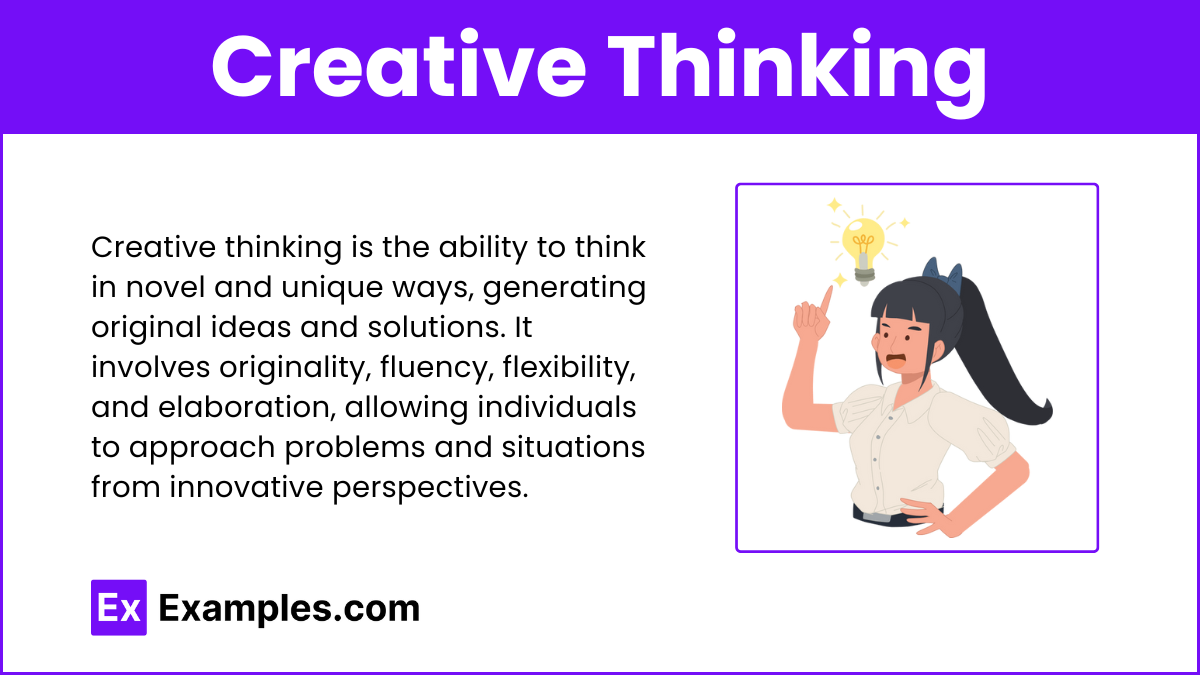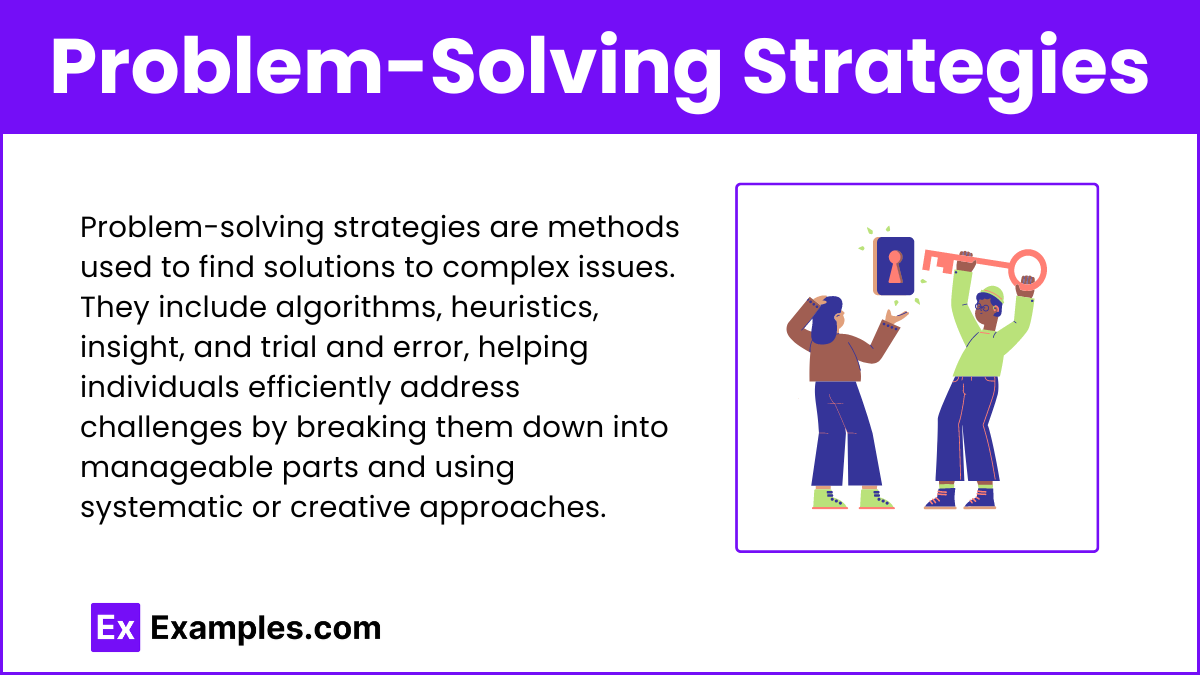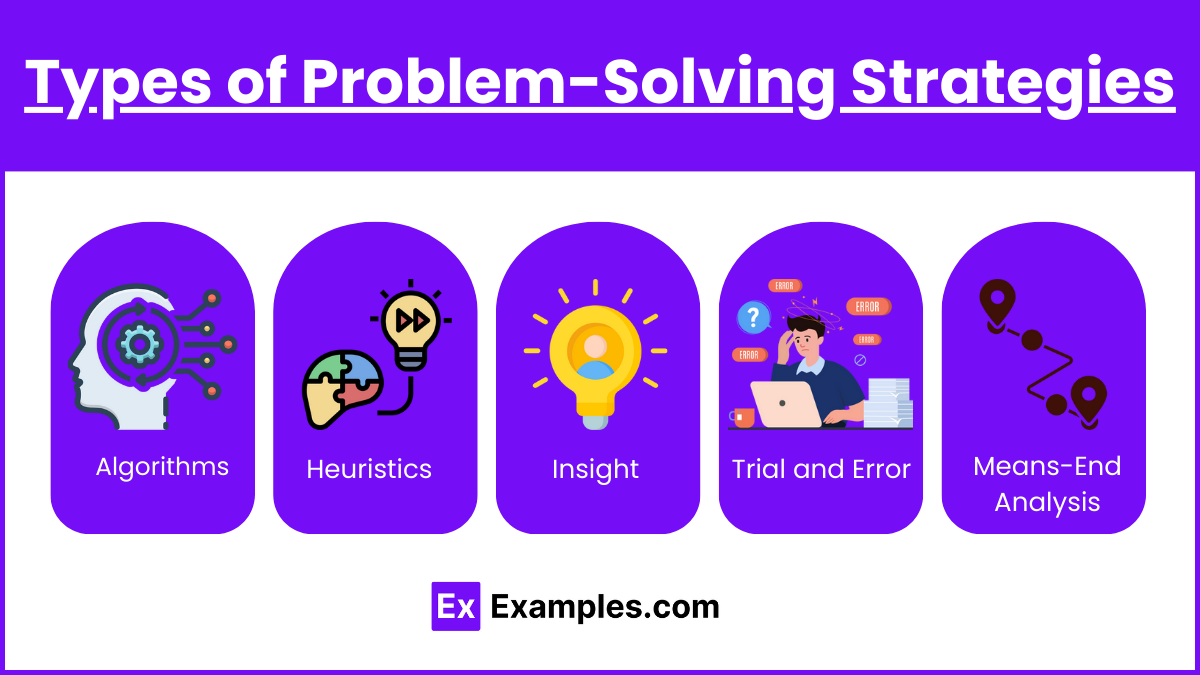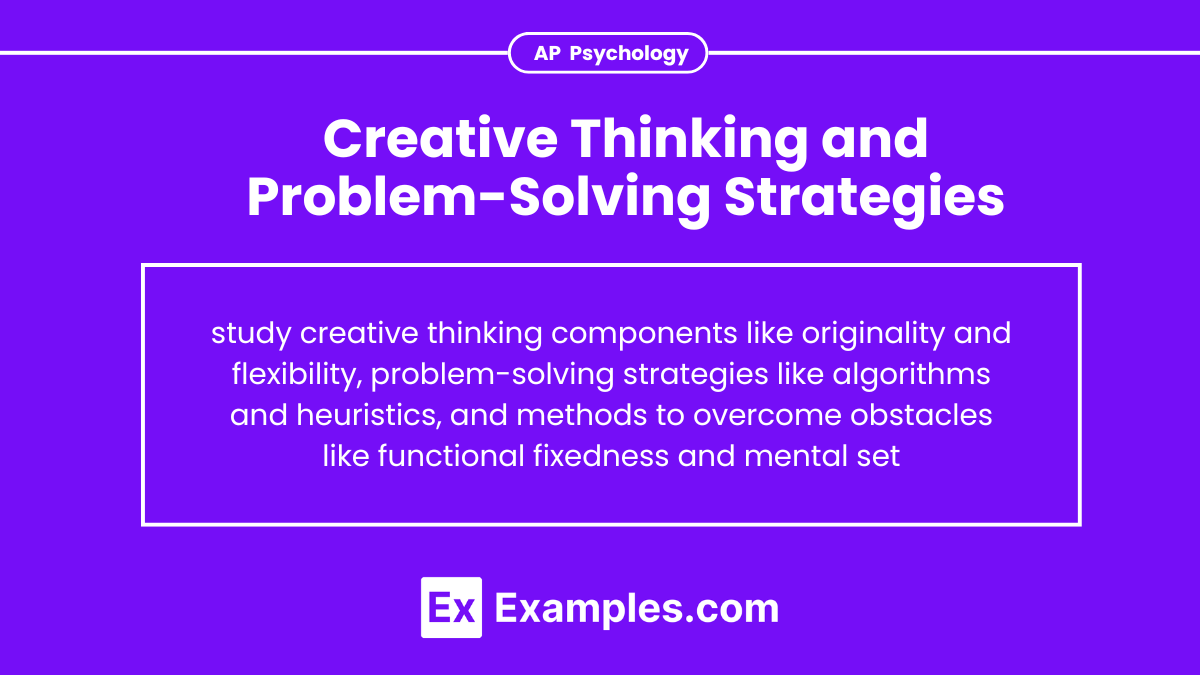Creative thinking and problem-solving strategies are crucial concepts that explore how individuals generate novel ideas and navigate complex challenges. In AP Psychology, these strategies involve originality, fluency, flexibility, and elaboration in creative thinking, alongside problem-solving methods like algorithms, heuristics, and insight. Understanding these strategies, along with common obstacles and ways to overcome them, equips students with essential cognitive tools for academic success and real-life applications. Mastering these topics is vital for excelling in the AP Psychology exam.
Learning Objectives
Understanding the stages and components of creative thinking, recognizing different problem-solving strategies like algorithms and heuristics, identifying obstacles such as functional fixedness and mental set, and learning methods to overcome these obstacles. Students should be able to apply these concepts to real-life scenarios, demonstrate flexibility and persistence in problem-solving, and appreciate the importance of creativity in various fields. Mastery of these concepts is essential for success in the AP Psychology exam.
Creative Thinking

Creative thinking involves the ability to think in novel and unusual ways and to come up with unique solutions to problems. It is characterized by originality, flexibility, and the ability to generate new ideas.
Components of Creative Thinking
- Originality: Producing new and main ideas.
- Fluency: Generating a large number of ideas.
- Flexibility: Approaching a problem from different perspectives.
- Elaboration: Adding details to improve or expand upon an idea.
Stages of Creative Thinking
- Preparation: Gathering information and resources necessary for addressing a problem.
- Incubation: Subconscious processing of information where ideas are incubated.
- Illumination: The ‘aha’ moment when a solution suddenly becomes clear.
- Verification: Testing and refining the idea to ensure it works effectively.
Enhancing Creative Thinking
- Brainstorming: Generating as many ideas as possible without judgment.
- Mind Mapping: Visually organizing information and ideas.
- Free Writing: Writing continuously without worrying about spelling or grammar to spur creativity.
- Lateral Thinking: Approaching problems indirectly and creatively.
Problem-Solving Strategies

Definition
Problem-solving involves the process of finding solutions to difficult or complex issues. Effective problem-solving requires both analytical and creative thinking skills.
Types of Problem-Solving Strategies

- Algorithms: Step-by-step procedures that guarantee a solution if followed correctly.
- Heuristics: General strategies or rules of thumb that simplify problem-solving but do not guarantee a solution.
- Insight: A sudden realization of a problem’s solution, often referred to as an “aha” moment.
- Trial and Error: Trying multiple solutions until finding one that works.
- Means-End Analysis: Breaking down a large problem into smaller, more manageable parts and addressing each part individually.
Common Heuristics in Problem-Solving
- Availability Heuristic: Estimating the likelihood of events based on their availability in memory.
- Representativeness Heuristic: Assessing the similarity of objects and organizing them based around the category prototype (e.g., stereotypes).
- Anchoring and Adjustment Heuristic: Starting from an initial value (anchor) and making adjustments to reach a final decision.
Obstacles to Effective Problem-Solving
- Functional Fixedness: Inability to see objects as functioning other than in their usual way.
- Mental Set: Tendency to approach problems in a particular way, often one that has worked in the past.
- Confirmation Bias: Tendency to search for, interpret, and remember information that confirms preconceptions.
Overcoming Obstacles
- Flexibility: Be willing to adapt and change your approach.
- Persistence: Continue working on a problem even when it is challenging.
- Openness to Experience: Being open to new experiences and willing to try new approaches.
Real-Life Applications of Creative Thinking
- Education: Encouraging students to think creatively to solve problems and generate new ideas.
- Business: Using creative strategies to develop innovative products and solutions.
- Science: Applying creative thinking to generate hypotheses and design experiments.
Real-Life Applications of Problem-Solving Strategies
- Everyday Life: Solving daily challenges efficiently (e.g., managing time, navigating social conflicts).
- Professional Settings: Addressing complex tasks in various careers, from engineering to medicine.
- Technology: Developing new technologies and software solutions through effective problem-solving.


